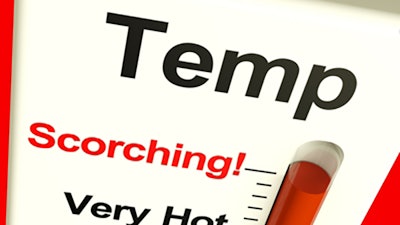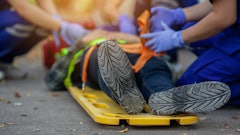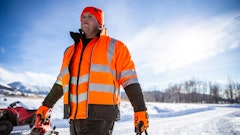
As temperatures rise in summer, your brain and body play out an elaborate battle plan to keep cool. A region of your brain known as the hypothalamus — often called the “body’s thermostat” — detects changes in core body temperature and signals your body’s first responders. When your body gets overheated, it begins to sweat. When the sweat evaporates it produces a cooling effect.
When the body’s internal temperature exceeds 104°F you run the risk of heat exhaustion, which kills over 600 Americans every year on average.
Despite the intricacies of the body during summer spikes in temperature, the following science-backed hacks will help you keep cool in any heat wave.
Eat Light Meals
Most of the heat generated in the body is derived from eating. If you have ever eaten a large meal and felt sweaty and lethargic afterward, this is because eating increases your core temperature as the body works to digest and metabolize your meal.
Watermelon, peaches, apricots and radishes naturally cool the body by replenishing electrolytes. Electrolytes are salts and minerals, such as potassium, magnesium and calcium, that conduct electrical impulses in the body. Loss in electrolytes through sweat leads to dehydration.
Other foods such as fennel seeds and fenugreek seeds are known to improve heart health, cooling the body as they lower blood pressure.
A few other foods to eat include:
- Salads with leafy greens, cucumbers, spinach and tomatoes
- Fresh fruit for dessert
- Eat seafood like clams and crab
Drink coconut water
Coconut water is high in potassium, which makes it a great source of electrolytes. If proper hydration is not maintained, the amount of blood flowing through your cardiovascular system diminishes causing your heart to work harder, increasing your core body temperature.
In a study that proves coconut water’s ability to fight hypertension, 71% of patients experienced a significant decrease in average diastolic blood pressure, the pressure between heartbeats. A lower diastolic pressure means your blood is not applying unnecessary pressure against your artery walls.
Wear thin, loose and light colored clothes
The body naturally cools itself through sweating, but the cooling actually results from evaporation. Sweat cannot properly evaporate if covered by thick clothing, so the looser and lighter the clothing, the more conducive to cooling.
Dark colors absorb more wavelengths of light, converting the energy into heat. Light colors reflect wavelengths, thus less light is converted into heat. Therefore, white clothing will result in less heat absorption from the sun.
Also, natural fabrics are a more breathable option.
Avoid caffeine
Increases in core body temperature have been linked to caffeine intake. Caffeine causes vasoconstriction, the constriction of blood vessels which warms the blood. Vasoconstriction is the opposite of vasodilation, which is a process used to cool the body.
Despite your attempts to cool down with that iced coffee or energy drink, the feeling may be temporary as the warming effect of caffeine commences.
Activate your pressure points
Pressure points in various locations around your body can actually assist in cooling you down. Applying pressure to the back of the neck (GB20) and shoulders (GB21) can lower your blood pressure. Another cooling pressure point is located on the bottom of your feet (KD1), which is why dipping your feet in cool water can result in a full-body cooling sensation.
Another option is to apply an ice pack to your neck and shoulders.
Eat spicy foods
Although it may seem counter-intuitive to eat spicy foods to cool down, science has proven that it works. Chili peppers contain a chemical compound that tricks the brain into a false sense of increasing body temperature. The cooling component of spicy food is then subsequently engaged as you begin to perspire, which results in cooling through the evaporation of sweat. The same is true when you drink hot liquids.
In a study subjects were fed a chili pepper in the first course of the meal and subsequently consumed less calories overall. Eating spicy food also provides support for a previous hack, curbing your appetite and allowing you to eat lighter meals.
Whether you live in a climate where heat is a daily reality or limited to the summer months, integrating these hacks into your life will allow you to remain cool, calm and collected.
Article originally published on choosetexaspower.org.
Additional resources:OSHA Releases Free Mobile App to Monitor Heat Index18 Tips to Stay Cool on the Jobsite in the Summer Heat
10 Hot-Weather Safety Tips for Construction
OSHA's Heat Illness Prevention Training Guide
Protect Outdoor Workers from Heat Illness
Hot, Humid Weather is Coming. Are Your Team and Fleet Ready?
[VIDEO] Construction Safety: Preventing Heat Stroke and Illness
How to Keep Construction Workers Cool
Heat Illness Prevention: Keep It Cool in the Dog Days of Summer




















